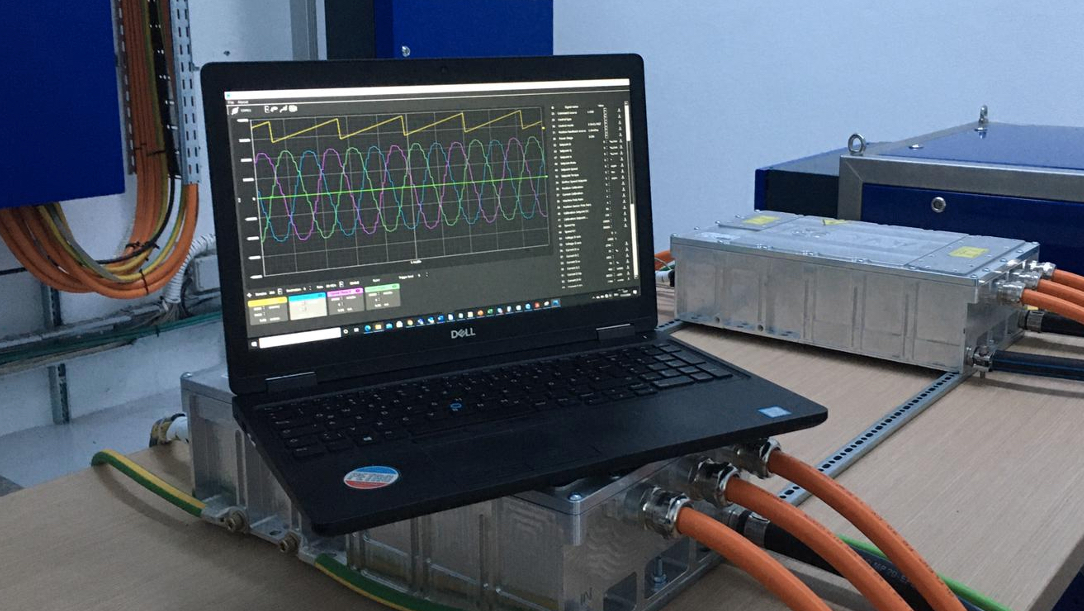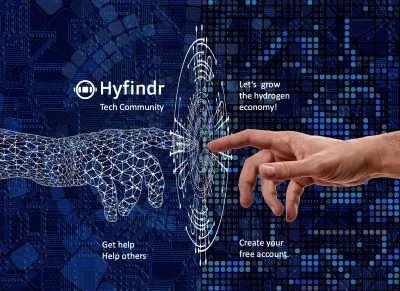- How does an electric motor controller work?
- Is there a difference between an inverter and an electric motor controller?
- What are the application areas of electric motor controllers (EMC)?
- What is the specific usage of EMC/inverters in fuel cell systems?
- What type of electric motor controller is used in fuel cell systems and other EVs?
- What are the development challenges faced in any project incorporating fuel cell system inverters?
Browse fuel cell inverters from leading suppliers on our marketplace!
How does an electric motor controller work?
The inverter, also known as an electric motor controller, is normally connected to a CAN communication line, from where a torque or speed setpoint is demanded – normally from a higher control loop: vehicle control unit for traction applications, or even fuel cell control unit for fuel cell systems. Therefore, depending on the selected control method for a specific application, the inverter can work as a motor speed controller or as a motor torque controller.
The fuel cell system inverter algorithms receive the torque or speed setpoints and transduce them into a current setpoint for each phase. As the inverter is designed to operate the motor within safe and efficient conditions, the algorithms take various inputs into consideration, such as the DC voltage level, motor position, the stator temperature and the temperature of the inverter itself.
Is there a difference between an inverter and an electric motor controller?
No, electric motor controllers can also been called “inverters”. The “inverter” is electrically connected between the high voltage battery (DC bus) and the electric motor, and it is designed to convert the energy stored in the battery from DC current into AC current.
What are the application areas of electric motor controllers (EMC)?
For many decades now, electric motors have become a very popular solution in different applications in many industries, in automotive applications, domestic applications and in many other sectors.
Since the introduction of the electric vehicle, electric motors have gained an even higher relevance as they are a key part of the powertrain, but also for auxiliary applications required in any vehicle: electric steering system, electric brake system, electric air conditioning system, among others. In fuel cell systems, electric motor controllers can be found in the air compressor, water pump and in recirculation pumps.
These elements driven by electric motors (Mainly AC motors) are responsible for the main energy consumption in vehicles, and they require a proper control to operate efficiently and safely.

Signal of an electric motor controller
What is the specific usage of EMC/inverters in fuel cell systems?
- Use of EMS/inverter for air compressor
In fuel cell systems, the most challenging application in which an inverter is applied is to control the air compressor. The air compressor is used to supply the air that the stack requires to fulfill the chemical reaction and generate electricity. Depending on the fuel cell system power output and application, the inverter and the electric motor can reach power levels from a few watts up to a couple of tens of kilowatts. Thus, inverters normally have a high voltage DC input, and they require a liquid cooling circuit. Depending on the compressor size, the speed can vary from a few thousand RPM for the biggest ones, up to ~280,000 RPM for the smallest ones. These high-speed motors require specific control techniques and a dedicated inverter hardware to support this operational speed range.
- Use of EMC/inverter for water pumps:
Water pumps are used in fuel cell systems to remove the heat generated by the chemical reaction and control the system temperature. In fuel cell systems at least two coolant circuits or loops can be found: the power electronics loop and the stack loop.
The power electronics loop is dedicated to cool down the power electronics components such as the inverter, air compressor and other elements, whereas the stack loop is dedicated to cool down this one component only (the stack). The stack circuit requires deionized water, and therefore needs to be separated from other elements (especially power electronics). Ion filters must be used for the coolant.
- Use of EMC/inverter for recirculation pumps:
In the fuel cell system, the recirculation pump is used to recirculate the excess hydrogen that did not react in the stack back to the stack’s hydrogen inlet line. This excess hydrogen is recuperated and the purpose of the pump is to push it back to the inlet to be consumed and generate electricity. To make this possible, the pump’s motor and inverter have to generate enough power to bring the hydrogen up to 1bar-2bar of absolute pressure downstream from the stack.
What type of electric motor controller is used in fuel cell systems and other EVs?
There are many types of electric motor controllers, as they are designed to control different types of motors. For fuel cell systems and EV applications three main types of electric motor controller are used:
- 3-phase motor controller
- 6-phase electric motor controller
- Electric motor controller for cooling systems
What is a three-phase electric motor controller?
This motor controller type can control 3 phase motors. Such inverters are used for applications from a few hundred volts up to 800 volts application. Typically, the power range can also go from several kilowatts up to 250 KW. They are used for:
- E-Drive applications (passenger cars, light/medium duty)
- Fuel cell air compressors
- E-Turbo (electrically assisted turbo compressor)
- Pumps – steering systems, brake systems, air cooling systems, coolant system.
What is a six-phase electric motor controller?
Electric motor controllers with six phase outputs are normally used for traction applications, where higher current is needed. The motors requiring a six phase inverter normally use parallel windings or open winding topologies. The voltage range for this type of motor also reaches from low voltage applications all the way to power outputs of 400-500kW. These types of electric motors usually have lower speed range and higher torque output compared to 3-phase motors.
How are electrical motor controllers in cooling systems different?
Air cooled systems: Air cooled systems require bigger volumes to ensure good heat dissipation and in consequence, these systems have lower power density. Normally, this solution is chosen for applications with low power requirements or where cost considerations prevail over system performance.
Liquid cooling: lliquid-cooled systems have better integration capabilities, as they are more compact in size for a given power delivery. This is the most popular solution for standard automotive or heavy-duty applications.
What are the development challenges faced in any project incorporating fuel cell system inverters?
From the system integration point of view, there are always many elements and components that have to be connected and “make them work”. Specifically, the inverter has many interfaces:
- Mechanical
- Hydraulic
- Electrical (HV & LV)
- Communication with high level control units
- Control loop to command the electric motor
All these inverter “touch points” are a challenge for any system integrator, as they must not only integrate this component, but also many others to be integrated at the same time within a vehicle or a bigger system.
To overcome these issues and reduce time and effort needed for development it is very important to work with a development partner who not only has the expertise in inverters and motors, but who also understands the final application and the operating scenarios the overall system will be subjected to. It is therefore of paramount importance to work with a partner who can provide a turnkey solution. This solution should include tools to facilitate calibration and vehicle integration by incorporating self-calibration routines, or OTA (over-the-air) software updates.
Content contributed by EPowerlabs
EPowerlabs was born from the vision to contribute towards a more sustainable world by providing services to help industry players accelerate the adoption of electric mobility. The team is formed by a group engineers who have developed deep knowledge in leading automotive companies. The company has the mission to share this experience with clients through custom, agile and effective services. EPowerlabs has developed a variety of embedded hardware to meet the specific needs of each project. From small motor control units for bicycles and mopeds in different power ranges, to developments for automotive industry inverters up to 150kW.
Last update: 6.6.2022








